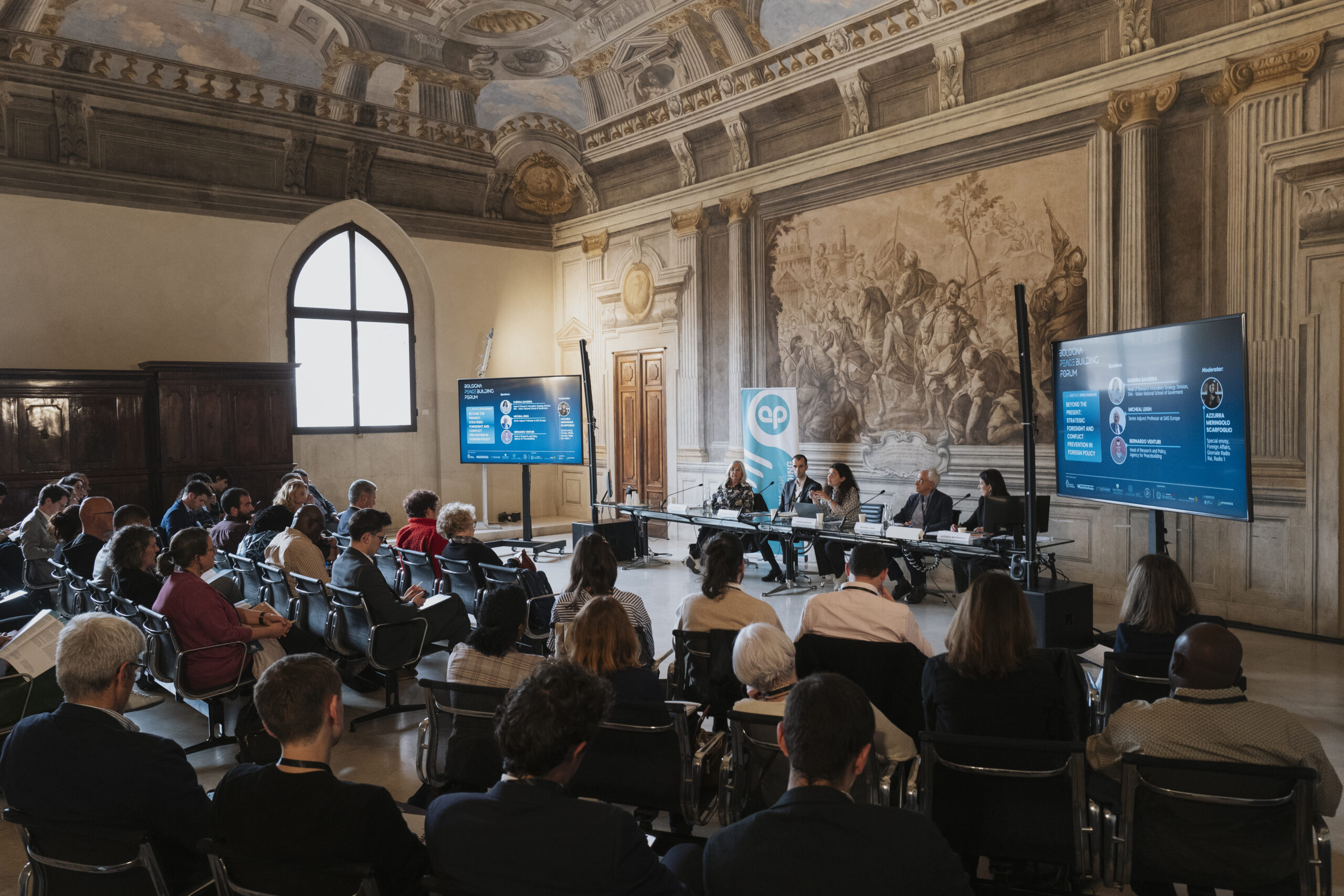
“Smart peace. Tech, Human, Possible.”: the Bologna Peacebuilding Forum 2025
IN BRIEF
In an era of rapid digital transformation, technology is reshaping how peace is built, understood, and sustained. From AI-driven foresight to inclusive digital dialogues, PeaceTech offers powerful tools, yet only when grounded in human agency and ethical use. This reflection from the Bologna Peacebuilding Forum 2025 explores how tech and humanity must go hand in hand for peace to be truly possible.
“Smart peace. Tech, Human, Possible.”:
the Bologna Peacebuilding Forum 2025
We’re living in a dynamic era. Everything around us is evolving, and the peacebuilding landscape is no exception. From the fragmentation of the rules-based international order to the rise of new actors and the emergence of a hybrid system, the field is undergoing profound transformation. We’re living in a digital era. At the forefront of these shifts is the rapid development of new technologies, which hold the potential to reshape the way we understand and practice peacebuilding, as widely discussed at the Bologna Peacebuilding Forum 2025.
Unpacking PeaceTech: tools that are already shaping the field
What exactly is PeaceTech, and what kinds of technologies are we talking about when it comes to peacebuilding? Whether we fully realise it or not, these tools are already here, and they are influencing the field regardless of our personal stances on technology. Therefore, it’s important to understand how these technologies are already transforming peacebuilding efforts.
From social media to artificial intelligence, a wide range of tools are being deployed. One prominent example is social media listening: a method used to monitor, track, and analyse conversations and trends on social platforms. This allows peacebuilders to gain valuable insights into conflict dynamics, identify key actors, and detect the narratives spreading online, helping to anticipate flashpoints or emerging tensions.
Another impactful tool is deliberative technology: digital platforms designed to foster inclusive and structured dialogue among diverse groups. These tools create space for meaningful discussions by enabling both real-time and asynchronous participation, ensuring that voices from all corners of society can be heard and reflected in peace processes.
Lastly, AI-powered foresight tools are being used to imagine and plan for medium and long-term futures. Foresight involves exploring potential developments, which could, for example, help conflicting parties to move beyond their current disagreements and focus instead on shared visions for the future.
How PeaceTech is making a positive impact
Some tangible areas in which the influence of technology on peacebuilding is producing benefits can be mentioned.
Address misinformation and give agency to people. One of the most urgent issues is the link between online dynamics and offline violence. Social media can fuel division, spread misinformation, and trigger real-world conflict. That’s why it’s critical to equip people with tools to identify and counteract distorted narratives and polarising content.
Rapid response is another crucial advantage. The real-time nature of digital tools allows for rapid responses to emerging threats, such as viral fake news. But, perhaps paradoxically, technology also supports human pace, especially through deliberative platforms that combine synchronous and asynchronous engagement. This helps prevent information overload and gives participants their own time to reflect before contributing, ultimately leading to more thoughtful and inclusive dialogue.
Inclusivity is a central benefit of PeaceTech. Social media and low-tech tools like WhatsApp and Telegram help overcome geographical barriers, enabling engagement with dispersed people, local actors and communities that are often hard to reach. Inclusion also means addressing power imbalances: by amplifying the voices of those typically marginalised, these tools create more equitable spaces for participation. Deliberative technology, in particular, facilitates this by ensuring that overlooked perspectives can meaningfully contribute to the conversation.
Find common ground. Regarding facilitating dialogue, beyond bridging linguistic divides, AI can also analyse discussions and infer areas of potential common ground, even helping to generate consensus statements. Importantly, AI can help overcome human bias, offering more objective perspectives that can foster trust and fairness in dialogue processes.
PeaceTech: an assistant of human effort
As we reflect on the potential of PeaceTech, one key message must be kept in mind: tech solutionism is the enemy of peacebuilding. Technology should not be glorified, it is not a magic wand resolving conflicts where humans have failed.
Rather, technology should be seen for what it is: a powerful assistant of human effort. Used thoughtfully and ethically, PeaceTech can support, strengthen, and expand the work already being done by peacebuilders. But it must remain rooted in human agency, guided by political processes, and grounded in local realities.
In the end, peace is not built by algorithms, it is built by people. Technology can be a valuable ally in this work, but only if it serves the vision of a more just, inclusive, and peaceful world.
































